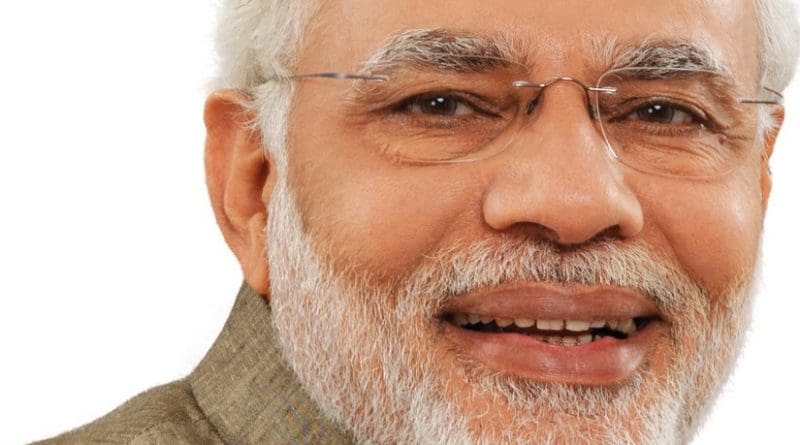PM Modi’s Visit To Japan: Prospects And Prudence – Analysis
By IPCS
By Sandip Kumar Mishra*
Indian Prime Minister Narendra Modi’s two-day visit to Japan, 11-12 November 2016, is eagerly awaited in India for an almost certain civil nuclear deal between the two countries. This would be an important achievement, as until now Japan has been firm on its stand of not having nuclear technology exchange with any non-NPT signatory. Both the countries had broad consensus on the deal during Japanese Prime Minister, Shinzo Abe’s visit to India in December 2015 and in the subsequent months the details have gradually been carved out. The deal will boost bilateral economic and security ties and facilitate leading US-based players to set up atomic plants in India. The deal has been important not only because Japan is one of the most important players in the nuclear energy sector but also because some of the American nuclear plant makers have Japanese investments in them and without Japan’s consent they were not able to reach the Indian market.
There have been important high-level contacts between India and Japan in the recent past, which which may be seen as a prelude to Modi’s visit and would bring more comprehensive partnership between the two countries in the future. On 3 November, a Japanese parliamentary delegation visited India and had a meeting with Modi and on 5 November, Japanese National Security Advisor Shotaro Yachi met his Indian counterpart Ajit Doval in New Delhi. In several other exchanges, both the countries have shown their strong willingness to collaborate on various issues of mutual cooperation such as tax convention to cover banking information, disaster management, high speed trains, Japanese investment in India and so on. In fact, after two years of talks, India’s Defence Ministry has approved the purchase of 12 ShinMaywa US-2i amphibious search-and-rescue/maritime surveillance aircraft from Japan. Though, it’s not clear if Japan has agreed to the Indian demand of buying only two of them and building the remaining ten in India, the deal per se is an important step forward. This would be the first time that Japan would export arms to India and it underlines the growing proximity and trust between the two countries. India and Japan have identified the importance of each other not only for bilateral cooperation and gains but also for their mutual interests on most of the regional and global issues.
In the changing economic and security dynamics of the Asia-Pacific region, which is largely shaped by the rise of China and its “assertive” moves in the regional politics, it has been imperative for Japan to reach out to India and ask for a more active role. Recently, the Deputy Director of Japan’s Foreign Ministry’s regional policy division, Yuki Tamura said that that “we are encouraging India to speak up on issues related to South China Sea because maritime security is important.” In the upcoming East Asia Summit in Japan, which will be held in December 2016, there is all probability that Tokyo would insist on India having a more proactive role on issues related to the maritime security of the region.
The US is also in agreement with Japan that India must be supported and brought into the network of countries which are concerned about an “assertive China” in the South and the East China Sea and beyond. For the same reason, in June 2016, the Malabar Naval Exercise among India, the US and Japan took place near Okinawa in Japan.
India-Japan friendship has a long history, which has gradually deepened with the course of time, though not without disagreements on India’s nuclear tests in 1998. However, under the leaderships of Modi and Abe, the pace and content of friendship has increased substantially.
Although the growing “special strategic global partnership” between the two countries is an important achievement, which is going to be further strengthened by the Indian Prime Minister’s visit to Japan, India should tread carefully on three counts.
First, New Delhi needs to be cautious in prematurely over stretching its role in the regional politics. Although, India’s growing economic and military prowess is fact but it must take an incremental approach rather than committing itself beyond its capabilities.
Second, India should also be clear about its own national interests and carefully assess that by becoming part of the great game in Asia-Pacific, which has unleashed with decline of the US and emergence of China, India does not become a pawn of any vested interests. India shares a long unsettled border with China along with cultural and historical ties, which are absent in the cases of both Japan and the US. Thus, India’s approach towards China must also be different and more nuanced.
Third, in the process of building proximity with Japan, India must also remember that Japan has its own historical and colonial baggage with other countries of the region such as South Korea and Taiwan. India needs to assure them that the India-Japan ties would not hamper New Delhi’s bilateral relations with these countries. This would be possible when India does not solely and narrowly focus on its bilateral relations with Japan but also keeps in mind its integrated regional objectives.
* Sandip Kumar Mishra
Associate Professor, Centre for East Asian Studies, JNU & Visiting Fellow, Institute of Peace and Conflict Studies (IPCS)

